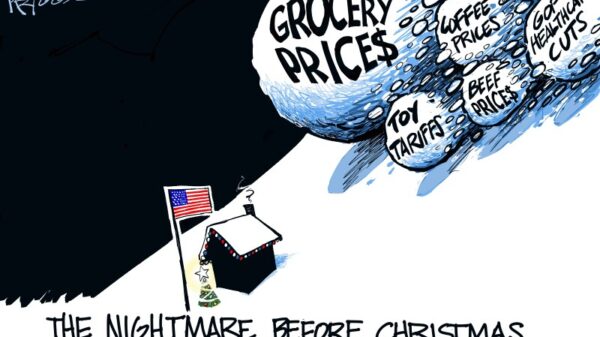URGENT UPDATE: Following the latest US Consumer Price Index (CPI) report, expectations for interest rate cuts have surged dramatically. The Federal Reserve is now pricing in a 61 basis points cut by year-end, with a staggering 98% probability for a rate cut at the upcoming meeting. This marks a significant shift in market sentiment.
The implications are huge. The Fed’s recent data, released earlier today, showed inflation figures aligning closely with expectations, not strong enough to prompt a reassessment of monetary policy. Consequently, the focus has now shifted toward Fed Chair Jerome Powell‘s highly anticipated speech at the Jackson Hole Symposium later this month.
In parallel, other major central banks are also adjusting their forecasts. The European Central Bank (ECB) is indicating an 11 basis point cut, with a 95% probability of maintaining current rates at their next meeting. Similarly, the Bank of England (BoE) shows a 17 basis point outlook with a 92% probability of no changes, while the Bank of Canada (BoC) reflects a 22 basis point outlook at a 67% probability for stability.
In the Asia-Pacific region, the Reserve Bank of Australia (RBA) is forecasting a 40 basis point rate with a 63% chance of no adjustments. Meanwhile, the Reserve Bank of New Zealand (RBNZ) expects a 41 basis point cut with a 90% probability at their next meeting. The Swiss National Bank (SNB) and the Bank of Japan (BoJ) are also maintaining their current rates, with probabilities of no change at 82% and 90%, respectively.
Market analysts indicate that for the Fed’s projected rate cut to drop below the current levels, an unexpectedly strong Non-Farm Payroll (NFP) report will be required. However, the prevailing sentiment suggests that the market will likely reevaluate future cut probabilities rather than shift back to a rate-hiking mindset.
As the financial world gears up for Powell’s address at Jackson Hole, traders and investors alike are closely monitoring developments. The outcomes of these meetings and speeches will have significant implications for global markets and economic stability.
Stay tuned for further updates as this story develops. The stakes are high, and the implications for everyday consumers, investors, and businesses are profound.





































































